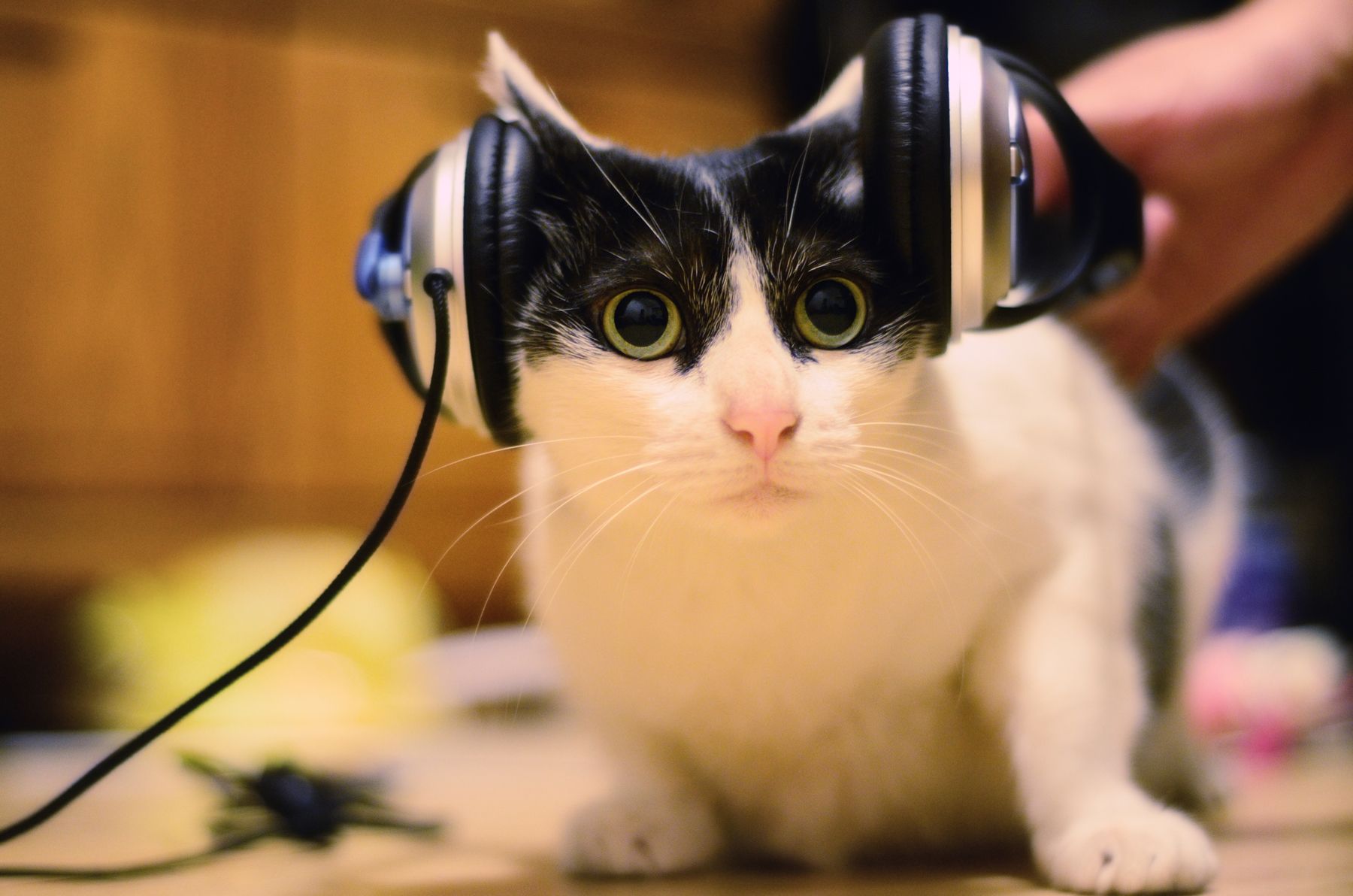
Why Are Cats on TikTok Getting Really Into Mid-2000s Ambient Music?
When a fan told Jimmy Lavalle that a song he wrote about 18 years ago had become really popular with cats on TikTok, he was shocked. He wrote the track in Reykjavík, Iceland, gazing at the Esjan mountains across Kollafjörður bay — now, cats were prancing across their living rooms to the tune.
Last December, the ambient and electronic musician (also known as Album Leaf) received a video in which the serene opening strains of “Window” — the first song on 2004’s In a Safe Place — unexpectedly piqued the attention of a cat and seemed to lure the often aloof animal to its owner for a few good pets. “I saw it and just thought, ‘Oh, that’s funny,’” Lavalle tells Rolling Stone. “Then a friend sent it to me, then another friend sent it to me. People were sending it to my wife, my family was sending it to me, and people were saying they were trying it out on their cats. It’s just like, ‘What the heck?’”

Chad Kamenshine*
Two months later, and the trend is still chugging along, and Lavelle — who just released his score for the 2020 sci-fi flick Synchronic — says the only other comparable moment he’s experienced was when fans of the TV show Scandal latched onto his song “The Light” after it was featured in an episode. “I know of songs that were popular based on commercials and stuff like that,” he says with a laugh, “but nothing like what I’ve seen now, which is user-generated content that is easily uploadable to the internet. It’s a really great thing.”
Although far from the kind of blockbuster viral trends we’re used to seeing on TikTok (i.e. the “Old Town Road”-scored “Yeehaw Challenge” and the recent “Buss It” challenge), the “See If Your Cat Will Come Cuddle With You Challenge” (for lack of a more succinct term) has been consistently entertaining those who’ve taught their TikTok algorithm to serve up quality cat content for the past two months. Its origins seem to be a December 3rd, 2020 post from a user named jennimorose, who just happened to have the Album Leaf’s “Window” on a playlist and kept noticing that whenever the song came up on shuffle her cat would stop whatever she was doing and come looking for pets.
Jennimorose urged other cat owners to try it, and as the meme spread, it took on a basic format: The robotic text-to-speech AI voice says, “They say if you play this sound your cat will come cuddle with you,” after which cat owners eagerly wait to see whether their cats respond or not. Scroll through the videos on TikTok, and the results are decisively mixed — some cats quickly trot over to the source of the sound, others poke their heads up, and some, in typical feline fashion, simply cannot be bothered. (An unofficial survey conducted in the Rolling Stone staff’s pet-centric Slack channel yielded similar results.)
That mix of reactions speaks to the open-ended nature of the question: What kinds of music will a cat respond to? As cat behavior and wellness expert Jackson Galaxy — host of the long-running Animal Planet series, My Cat From Hell, and a former musician — says, “I’ve heard everything. Literally. ‘Cats will respond to Verdi, but they won’t respond to Wagner.’ Or, ‘They’ll respond to EDM,’ or, ‘They’ll respond to white noise.’”
In 2015, the musician David Teie took a stab at answering that question with his album, Music for Cats, which came out of a study he did with researchers at the University of Wisconsin. Teie was already interested in how music affects human emotion, and he carried some of his theories over to other animals, first working with cotton-top tamarin monkeys, then house cats. Teie’s work was rooted in the notion of “species-specific music” — essentially taking sounds that certain species would be innately familiar with and turning them into music.
The theory certainly holds for humans, Teie explains. For instance, it’s no surprise that after gestating in the womb for nine months, hearing nothing but a mother’s heartbeat, humans seem preternaturally attracted to music that falls within the same 60 to 100 beats-per-minute pulse range as an adult heart. Because cats have a shorter gestation period, Teie focused instead on other sounds kittens would hear, such as suckling and purring. But rather than just set recordings of purrs to music, Teie crafted purr-like sounds using production software; should the sound be too recognizable, he figured, a cat would just habituate to it and ignore it.
“When we create musical instruments that have a rough approximation of the emotions that it’s designed to trigger, but it’s not the real thing, we don’t habituate to it,” he says. “We can’t really identify it, so the mystery of the sound is something that keeps it affecting us.”
Teie thinks that mix of mystery and familiarity is at the heart of what some cats are responding to when they hear Album Leaf’s “Window.” The key sound is that dual synth tone that arrives about 16 seconds into the song: “That synth sound has two components,” Teie says. “The lower one, with a frequency of, let’s say, 440 hertz, it’s like the middle of the treble clef, but it’s a relatively vocal kind of sound. And then the second component that’s a major-tenth above, that’s like a whistle. But it goes together in the same instrument. Well, mice are capable of biphonation, so they can create two pitches at the same time. And they basically have that signature — the lower one is a vocal sound, and the upper one is a very pure whistle sound, and they are about that far apart, about a tenth apart. So it does have the signature, in the sense, of a mouse singing.”
(“Oh my gosh, that is incredible!” Lavalle replied after being told Teie’s theory. “He’s talking about all the harmonics that are happening just in the overtone, which is… Wow! That’s so cool.”)
Teie is quick to add that he doesn’t think cats responding to “Window” think there’s a mouse in the room. Rather, he compares it to the way a violin sounds like a female singing voice or an electric guitar with some gain on it sounds like a human scream. “It’s not as if we’re thinking, ‘Oh, that’s the human scream. I need to respond with an adrenal rush,’” he says. “It’s just a feeling, and I think that would be the same with the cats. It’s like, ‘I feel like going toward that sound.’”
This also helps explain the variety of responses among cats to, not just “Window,” but also Teie’s Music for Cats. Cats, like humans, are individuals, and like humans, they can have different tastes in music. To that end, when Galaxy tried playing “Window” for his cats, he said he got just one taker: “Three slept through it, one left the room, one poked his head up and one came toward the sound.”
Still, sound and music can have practical purposes when working with cats. A softer, higher human voice can make a cat more trusting of a human, Galaxy says. And last year, Louisiana State University researchers found that cat-specific music like Teie’s could be used to calm cats down during otherwise stressful vet visits. Still, Galaxy says he’s wary of music as a one-size-fits-all fix: “If you’re in a shelter and there are a dozen cats in there, and you impose a sound on them, you’re risking three or four of them being miserable from it.”
He continues: “This is sort of the real underpinning of my own work — trying to stop the generalization of any species. At some point, I hope that folks will accept that their cats are just like us — they’re animals whose preferences are formed over the course of their lifetime. And I think that that’s just what gets glossed over in sort of viral trends like this.”





